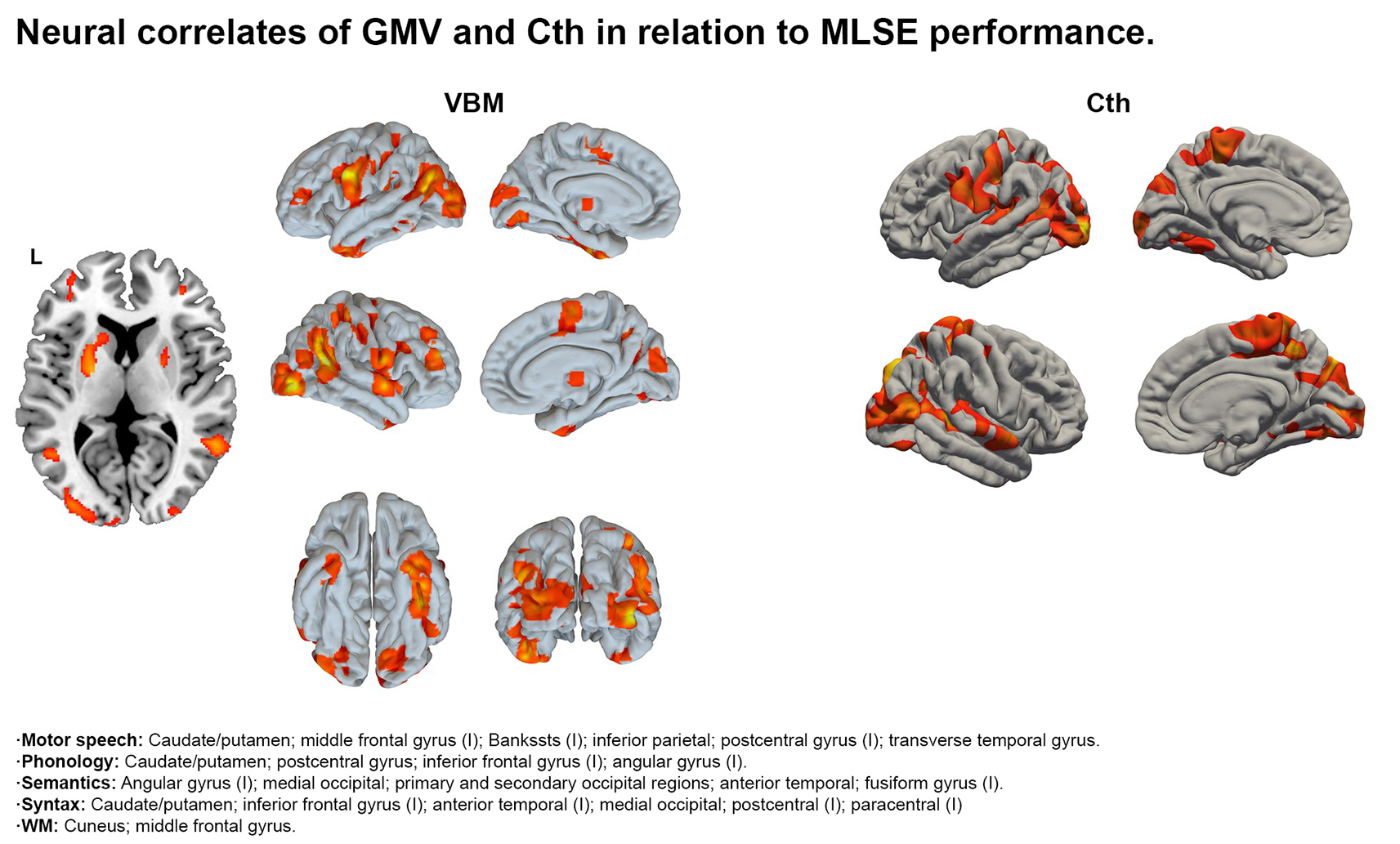Category: Huntington's Disease
Objective: To explore the language profile of early Huntington’s disease (HD) and the neural correlates that accompany the development of linguistic alterations in HD.
Background: The profile of cognitive impairment of HD has been considered to eminently have fronto-subcortical dysexecutive characteristics and almost absent aphasic features.
The most widely recognized language impairment in HD is dysarthria, but other signs, such as reduced fluency and syntax abnormalities, are well known entities attributed to basal ganglia involvement.
Clinical examination of individuals with HD illustrates a complex and highly heterogeneous cognitive phenotype, including linguistic disturbances. However, the characteristics of language disturbances of HD and the associated brain correlates have been largely omitted in the context of the study of the cognitive profile of HD.
Method: We used the Mini Linguistic State Examination (MLSE) to characterize the profile of language impairment, according to the characteristics of the different forms of progressive aphasia, in a cohort of 30 patients with early-stage HD.
T1 MRI sequences from all patients were used to explore the gray matter volume (GMV) and cortical thickness (Cth) correlates (FWE p < 0.05 corrected) of the different linguistic disturbances found.
Results: The MLSE total score was found to be in the impaired range [82.4 (13.9); range = 52 – 98] at the expense of lower performance in phonology, syntax, working memory and in the praxical component of speech. Semantic impairment was less relevant.
The topography of the brain regions involved in this language profile showed similarities with the topography defining some primary progressive aphasias. The neuroimaging analysis showed significant associations between language performance and several nodes of the temporo-parietal and fronto-striatal lexical-semantic and syntactic networks and nodes of the sensorimotor network.
Conclusion: From the early stages, HD may associate signs of language disintegration related to extensive fronto-temporo-parietal and striatal territories. Possibly, language impairment in HD occurs in a heterogeneous manner between patients, associating in some cases a phenotype similar to non-fluent agrammatic progressive aphasias. The mechanisms that explain the development of these deficits, the heterogeneity between patients and the role of these symptoms in the cognitive course of HD deserve to be studied in depth.
To cite this abstract in AMA style:
S. Martinez-Horta, A. Puig-Davi, F. Sampedro, J. Perez-Perez, J. Matias-Guiu, A. Horta-Barba, J. Pagonabarraga, M. Diez-Cirarda, L. Fernandez-Romero, M. Yus, F. Cuetos, J. Kulisevsky. Profile and neural correlates of language disintegration in early Huntington’s disease [abstract]. Mov Disord. 2022; 37 (suppl 2). https://www.mdsabstracts.org/abstract/profile-and-neural-correlates-of-language-disintegration-in-early-huntingtons-disease/. Accessed October 22, 2025.« Back to 2022 International Congress
MDS Abstracts - https://www.mdsabstracts.org/abstract/profile-and-neural-correlates-of-language-disintegration-in-early-huntingtons-disease/

